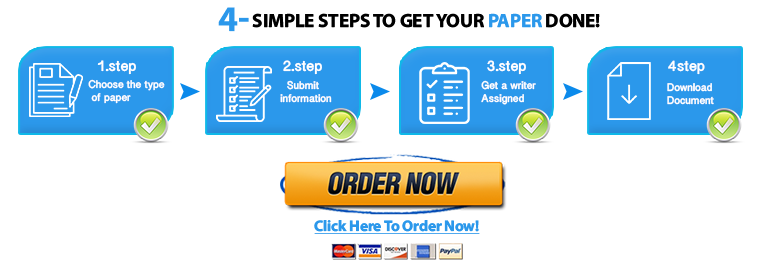In Task 3 of LXD Foundations II, you will continue the prototype stage in which you will create a mockup of your proposed e-learning solution
The performance assessments in the Learning Experience Design (LXD) Foundations I and II courses cover the five stages of design thinking: empathize, define, ideate, prototype, and test. In Task 3 of LXD Foundations II, you will continue the prototype stage in which you will create a mockup of your proposed e-learning solution that you created a storyboard for in Task 2 of LXD Foundations II.
In LXD Foundations I, you chose one of the case studies, found in the Web Links section, to guide your work. The same case study will be used throughout this course (LXD Foundations II). It is important to note that these case studies are designed to provide sample instructional scenarios. In an authentic design thinking project, the information presented would normally be obtained by gathering data and perspectives in your instructional setting directly from the target learners and from other team members, stakeholders, and subject matter experts. All three case studies can be found in the Web Links section of this task for easy reference.
For this task, you will create a mockup of the e-learning solution you storyboarded in Task 2 of LXD Foundations II. In the mockup, be sure to adhere to visual and graphic design principles, usability best practices, and universal design for learning (UDL) principles. Your mockup will be evaluated on several factors, some of which should be evident in the mockup itself, while others will need to be explained.
REQUIREMENTS
Your submission must represent your original work and understanding of the course material. Most performance assessment submissions are automatically scanned through the WGU similarity checker. Students are strongly encouraged to wait for the similarity report to generate after uploading their work and then review it to ensure Academic Authenticity guidelines are met before submitting the file for evaluation. See Understanding Similarity Reports for more information.
Grammarly Note:
Professional Communication will be automatically assessed through Grammarly for Education in most performance assessments before a student submits work for evaluation. Students are strongly
encouraged to review the Grammarly for Education feedback prior to submitting work for evaluation, as the overall submission will not pass without this aspect passing. See Use Grammarly for Education Effectively for more information.
Microsoft Files Note:
Write your paper in Microsoft Word (.doc or .docx) unless another Microsoft product, or pdf, is specified in the task directions. Tasks may notbe submitted as cloud links, such as links to Google Docs, Google Slides, OneDrive, etc. All supporting documentation, such as screenshots and proof of experience, should be collected in a pdf file and submitted separately from the main file. For more information, please
see Computer System and Technology Requirements.
You must use the rubric to direct the creation of your submission because it provides detailed criteria that will be used to evaluate your work. Each requirement below may be evaluated by more than one rubric aspect. The rubric aspect titles may contain hyperlinks to relevant portions of the course.
- Include the following sections of your passing submissions from LXD Foundations II to provide context for your identified instructional problem and learner population:
- the learning objective from Task 1, part C1 (LXD Foundations II)
- a copy of your storyboard from Task 2, part C (LXD Foundations II)
Note: The tasks in LXDFoundations I and LXD Foundations II are designed to be completed in order, using the same case study throughout, to simulate the design thinking process from start to finish.
- Create an original, low-fidelity mockup of a one-hour e-learning module (suggested length of 6–10 screens) that addresses the instructional problem and meets the needs of learners by doing the following:
- Represent the following four types of pages:
- introduction
- content
- summary of content (i.e., key takeaways of learning)
- assessment (i.e., formative and/or summative measure of learning)
- Represent all elements of sensory interaction in the mockup (e.g., audio, visuals, images, videos, or interactivity).
- Align to the learning objective in part
Note: The screens of a mockup are not a comprehensive, final e-learning solution, but they should be representative of that solution. The low-fidelity mockup can be submitted as a PDF document, slideshow, video, or any other medium that accomplishes the goal of demonstrating the end user experience of the e-learning solution. There are multiple ways the submission can accomplish these goals.
- Explain your thought process behind your mockup by doing the following:
- Explain how your mockup adheres to the following four visual and graphic design principles:
- white space
- visual hierarchy
- alignment
- movement
- Explain how your mockup follows usability best practices in these five areas:
- effectiveness
- efficiency
- engagement
- error tolerance
- ease of learning
- Explain how your mockup follows universal design for learning (UDL) principles by providing flexible options in these three areas:
- engagement
- representation
- action and expression
- Explain how your mockup plans for accessibility by considering these three areas:
- perceivability
- operability
- understandability
- Acknowledge sources, using in-text citations and references, for content that is quoted, paraphrased, or
- Demonstrate professional communication in the content and presentation of your
File Restrictions
File name may contain only letters, numbers, spaces, and these symbols: ! – _ . * ‘ ( ) File size limit: 200 MB
File types allowed: doc, docx, rtf, xls, xlsx, ppt, pptx, odt, pdf, csv, txt, qt, mov, mpg, avi, mp3, wav, mp4, wma, flv,
asf, mpeg, wmv, m4v, svg, tif, tiff, jpeg, jpg, gif, png, zip, rar, tar, 7z
RUBRIC
NOT EVIDENT
DISPOSITIONS:
The submission demonstrates both behavior and disposition that conflict with professional or ethical standards.
APPROACHING COMPETENCE
The submission demonstrates behavior or disposition that conflicts with professional or ethical standards.
COMPETENT
The submission demonstrates behavior and disposition that align with professional and ethical standards.
A:CONTEXTUAL INFORMATION
NOT EVIDENT
1 or more of the given sections from the tasks from LXD Foundations II are missing or incomplete.
APPROACHING COMPETENCE
Not applicable.
COMPETENT
All of the given sections from both tasks from LXD Foundations II are included.
NOT EVIDENT APPROACHING COMPETENCE
Not applicable.
COMPETENT
B2:MOCKUP: SENSORY INTERACTION
B3:MOCKUP: ALIGNMENT TO LEARNING OBJECTIVE
C1:VISUAL AND GRAPHIC DESIGN PRINCIPLES
C2:USABILITY BEST PRACTICES
The mockup does not repre sent each of the given types of
pages. The mockup represents each of the 4 given types of pages.
NOT EVIDENT
Sensory interaction is not rep resented in the mockup.
APPROACHING COMPETENCE
The mockup represents some elements of sensory interaction in the mockup, or the elements of sensory interaction are not clearly labeled throughout.
COMPETENT
The mockup represents all elements of sensory interaction in the mockup, and the elements of sensory interaction are clearly labeled throughout.
NOT EVIDENT
The mockup is significantly misaligned to the learning objective represented in part A.
APPROACHING COMPETENCE
The mockup partially aligns to the learning objective repre sented in part A.
COMPETENT
The mockup generally aligns to the learning objective represented in part A.
NOT EVIDENT
The submission does not explain how the mockup adheres to all 4 of the given visual and graphic design principles.
APPROACHING COMPETENCE
The submission explains how the mockup adheres to all 4 of the given visual and graphic design principles, but the explanation is not reasonable or is not supported by specific evidence from the mockup.
COMPETENT
The submission reasonably explains how the mockup adheres to all 4 of the given visual and graphic design principles, and the explanation is supported by specific evidence from the mockup.
NOT EVIDENT
The submission does not explain how the mockup follows usability best practices in all 5 of the given areas.
APPROACHING COMPETENCE
The submission explains how the mockup follows usability best practices in all 5 of the given areas, but the explanation is not reasonable or is not
COMPETENT
The submission reasonably explains how the mockup follows usability best practices in all 5 of the given areas, and the explanation is supported with specific evidence from the mockup.
C3:UDL PRINCIPLES
C4:ACCESSIBILITY
D:SOURCES
E:PROFESSIONAL COMMUNICATION
NOT EVIDENT
The submission does not explain how the mockup follows UDL principles by providing flexible options in the 3 given areas.
APPROACHING COMPETENCE
The submission explains how the mockup follows UDL principles by providing flexible options in the 3 given areas, but the explanation is not reasonable or is not supported with specific evidence from the mockup.
COMPETENT
The submission reasonably explains how the mockup follows UDL principles by providing flexible options in the 3 given areas, and the explanation is supported with specific evidence from the mockup.
NOT EVIDENT
The submission does not explain how the mockup plans for accessibility by considering the 3 given areas.
APPROACHING COMPETENCE
The submission explains how the mockup plans for accessibility by considering the 3 given areas, but the explanation is not reasonable or is not supported with specific evidence from the mockup.
COMPETENT
The submission reasonably explains how the mockup plans for accessibility in the 3 given areas, and the explanation is supported with specific evidence from the mockup.
NOT EVIDENT
The submission does not include both in-text citations and a reference list for sources that are quoted, paraphrased, or summarized.
APPROACHING COMPETENCE
The submission includes in-text citations for sources that are quoted, paraphrased, or summarized and a reference list; however, the citations and/or reference list is incomplete or inaccurate.
WEB LINKS
Higher Education Case Study K–12 Case Study
Need help with a similar assignment? Our experts can write a 100% original version for you
 Chat Directly with Us on WhatsApp
Chat Directly with Us on WhatsApp

I am a professional nursing assignment expert offering comprehensive academic support to university nursing students across various institutions. My services are designed to help learners manage their workload effectively while maintaining academic excellence. With years of experience in nursing research, case study writing, and evidence-based reporting, I ensure every paper is original, well-researched, and aligned with current academic standards.
My goal is to provide dependable academic assistance that enables students to focus on practical training and career growth.
Contact me today to receive expert guidance and timely, high-quality nursing assignment help tailored to your academic needs.



 Chat Directly with Us on WhatsApp
Chat Directly with Us on WhatsApp